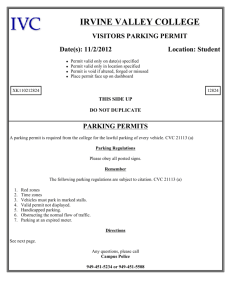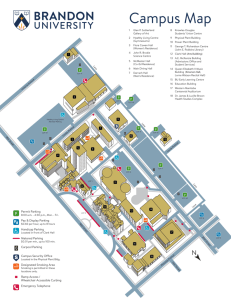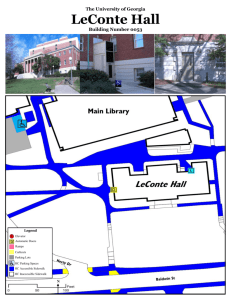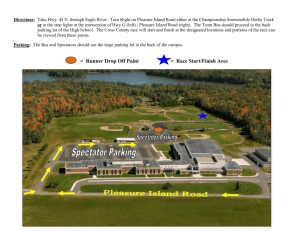Examples of the “old/new contract” appear in the excerpts from
advertisement
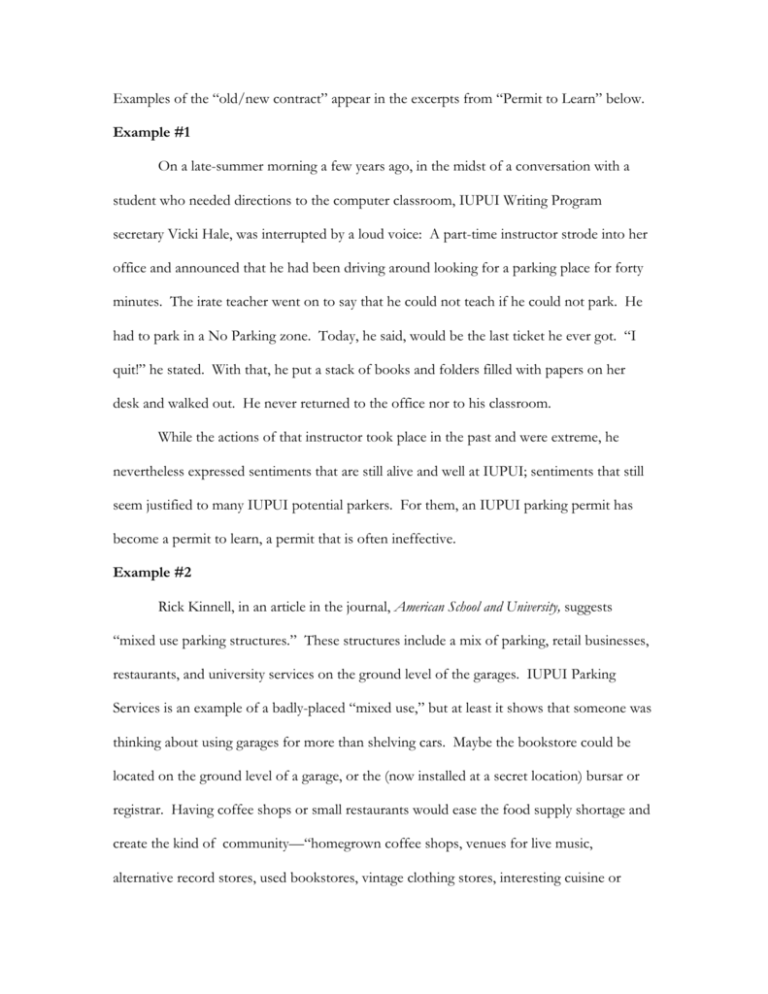
Examples of the “old/new contract” appear in the excerpts from “Permit to Learn” below. Example #1 On a late-summer morning a few years ago, in the midst of a conversation with a student who needed directions to the computer classroom, IUPUI Writing Program secretary Vicki Hale, was interrupted by a loud voice: A part-time instructor strode into her office and announced that he had been driving around looking for a parking place for forty minutes. The irate teacher went on to say that he could not teach if he could not park. He had to park in a No Parking zone. Today, he said, would be the last ticket he ever got. “I quit!” he stated. With that, he put a stack of books and folders filled with papers on her desk and walked out. He never returned to the office nor to his classroom. While the actions of that instructor took place in the past and were extreme, he nevertheless expressed sentiments that are still alive and well at IUPUI; sentiments that still seem justified to many IUPUI potential parkers. For them, an IUPUI parking permit has become a permit to learn, a permit that is often ineffective. Example #2 Rick Kinnell, in an article in the journal, American School and University, suggests “mixed use parking structures.” These structures include a mix of parking, retail businesses, restaurants, and university services on the ground level of the garages. IUPUI Parking Services is an example of a badly-placed “mixed use,” but at least it shows that someone was thinking about using garages for more than shelving cars. Maybe the bookstore could be located on the ground level of a garage, or the (now installed at a secret location) bursar or registrar. Having coffee shops or small restaurants would ease the food supply shortage and create the kind of community—“homegrown coffee shops, venues for live music, alternative record stores, used bookstores, vintage clothing stores, interesting cuisine or anything else that resembles culture”—that Shea Ramsey argued for in her letter to the editor. If mixed use garages seem like a fairly easy-to-do idea, then at the other end of the spectrum we find Harvard. The project for the 2001 seminar in Engineering Design was to work with the difficulty of parking in and around Harvard. The recommendations that came from the semester-long analysis of the problem included several approaches. Installing wireless access controls to keep out non-permitted parkers was one proposed solution; that solution might be a good one for IUPUI where the A and B lots routinely are used by people with E or no permit at all. They also suggested increasing parking fees and better enforcement. But their most interesting suggestion was the use of robotic parking garages.

